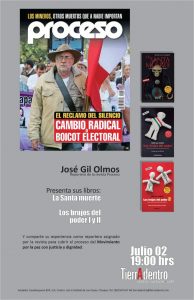
Radio Zapatista
Interview to the Digna Ochoa Human Rights Center – Coast Zone of Chiapas
Yasmín Guadalupe Hernández Núñez, legal counselor of the Digna Ochoa Human Rights Center in Tonalá, Costal Zone of Chiapas, speaks of the government’s harrassment against the center’s director Nataniel Hernández and his family, the criminalization of human rights activists in the country, and the National and Internacional Campaign agaisnt Judicial Harrassment and Criminalization of Human Rights Defenders and Social Activists in México.
Repression and arbitrariness at the “first sustainable rural city of the world” Nuevo Juan de Grijalva
Nuevo Juan de Grijalva is the dearest project of the Chiapas Government and promoted as the first sustainable rural city of the world and the solution to poverty. However, since it was inaugurated its residents have denounced that there are no jobs, the “sustainable” projects don’t work, electricity rates are exorbitant, the clinic doesn’t work, and, in general, they live a desperate situation. The city was built after a supposedly natural accident that destroyed homes and lands when the Grijalva river burst its bank. The Chiapas government committed to compensate the people for the damages to their lands and homes, but it never did. Now a large work is underway by the Federal Electric Commission, which will affect large extensions of land. Once again, the government committed to idemnify the residents for the destruction of their lands, but it never did. Without other alternatives, the residents of Nuevo Juan de Grijalva organized a demonstration. Instead of complying with its promises, the government’s answer was the illegal detention of of the demonstrators, with an outburst of arbitrariness and injustice typical of the authoritarian and arrogant ways of the governor Juan Sabines Guerrero. After a long struggle and the intervention of human rights organizations and even the United Nations, the prisoners were freed. In a visit with the Free Media Network of Chiapas, we spoke with some of them, who shared with us their experience.



